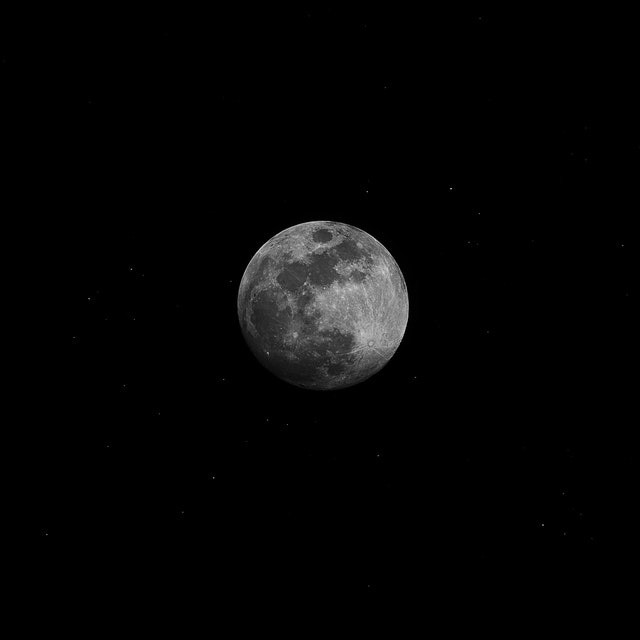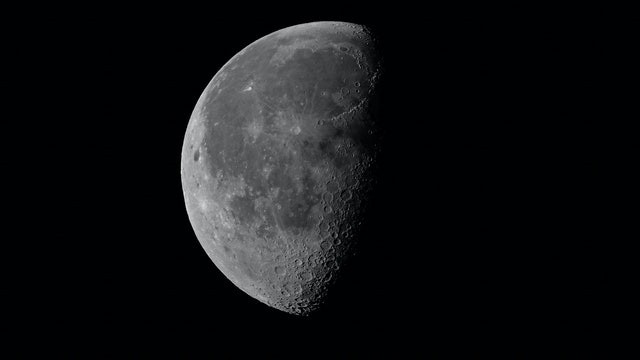Along with advancements in space exploration, we've recently seen a lot of effort and money put towards technology that might allow for more efficient use of space resources. A laser-sharp emphasis on discovering the optimum approach to manufacture oxygen on the Moon has been at the forefront of these efforts.

In October, the Australian Space Agency and NASA struck an agreement to deploy an Australian-built rover to the Moon as part of the Artemis mission to collect lunar rocks that could eventually produce breathable oxygen.
Moon's Atmosphere
Although the Moon has an atmosphere, it is extremely thin and primarily made up of hydrogen, neon, and argon. It's not the kind of gaseous combination that can keep oxygen-dependent creatures like humans alive.
On the other hand, there is plenty of oxygen on the Moon. It's just not in a gaseous state. Instead, it's encased in the regolith, the lunar surface's thick covering of rock and fine dust. Would it be enough to maintain human life on the Moon if we could extract oxygen from regolith?
Many of the minerals in the ground around us contain oxygen. Also, the Moon is primarily made up of the same materials that make up the Earth (although with a slightly greater amount of material from meteors).
Mineral-Rich Terrains
The Moon's terrain is dominated by minerals such as silica, aluminum, iron, and magnesium oxides. These minerals include oxygen, but not in a form that human lungs can absorb.
These minerals may be found on the Moon in various forms, including hard rock, dust, gravel, and stones that blanket the surface. This debris has accumulated over millennia as a result of meteorites colliding with the lunar surface.
As a soil scientist, John Grant is cautious about using the term "soil" when referring to the Moon's surface layer. Soil, as we know it, is a miraculous substance that can only be found on Earth. Over millions of years, various species worked on the soil's parent material, regolith, generated from hard rock.
The end product is a mineral matrix that was missing from the original rocks. The physical, chemical, and biological properties of Earth's soil are exceptional. In the meanwhile, the materials on the Moon's surface are mostly regolith in their natural state.
Lunar Regolith
The regolith on the Moon contains around 45 percent oxygen. However, the minerals, as mentioned earlier, are firmly coupled with oxygen. We must invest energy to tear away such tight relationships.
The oxygen is created as a byproduct in this situation. The top product on the Moon would be oxygen, with the aluminum (or other metal) removed as a potentially valuable byproduct.
It's a simple procedure, but there's a catch: it consumes a lot of energy. It would have to be sustained by solar energy or other energy sources accessible on the Moon to be viable.
The extraction of oxygen from regolith would likewise need a lot of heavy machinery. We'd have to transform solid metal oxide into liquid form first, either using heat or heat in combination with solvents or electrolytes. We have the technology to achieve this on Earth, but transporting this gear to the Moon - and providing enough energy to power it - will be a significant undertaking.
Space Applications Services, a Belgian business, said earlier this year that it would build three experimental reactors to enhance the electrolysis process of producing oxygen. As part of the European Space Agency's In-Situ Resource Utilization (ISRU) program, they hope to bring the technology to the Moon by 2025.
However, how much oxygen would the Moon truly offer if we do manage to pull it off? As it turns out, quite a bit.
We can make some estimations if we neglect oxygen trapped in the Moon's subsurface hard rock material and only examine regolith, which is easily accessible on the surface.
Lunar regolith includes an average of 1.4 tonnes of minerals per cubic meter, including around 630 kg of oxygen. According to NASA, people require roughly 800 grams of oxygen every day to exist. As a result, 630 kilograms of oxygen would keep a human alive for around two years (or just over).
How Much Oxygen Can the Moon Provide?

However, how much oxygen might the Moon truly offer if we do manage to pull it off? As it turns out, there's a lot.
On average, each cubic meter of lunar regolith contains 1.4 tonnes of minerals, including 630 kg of oxygen. Humans require roughly 800 grams of oxygen every day to thrive, according to NASA. So a human may live for nearly two years on 630kg of oxygen (or just over).
Let's pretend that the average depth of regolith on the Moon is 10 meters and that we can extract all of the oxygen from it. That implies the top ten meters of the Moon's surface could support all eight billion people on Earth for 100,000 years.
Also Read : Future Generations Will Experience More Climate Disasters than Their Ancestors Ever Will
For similar news, don't forget to follow Nature World News!
© 2025 NatureWorldNews.com All rights reserved. Do not reproduce without permission.





